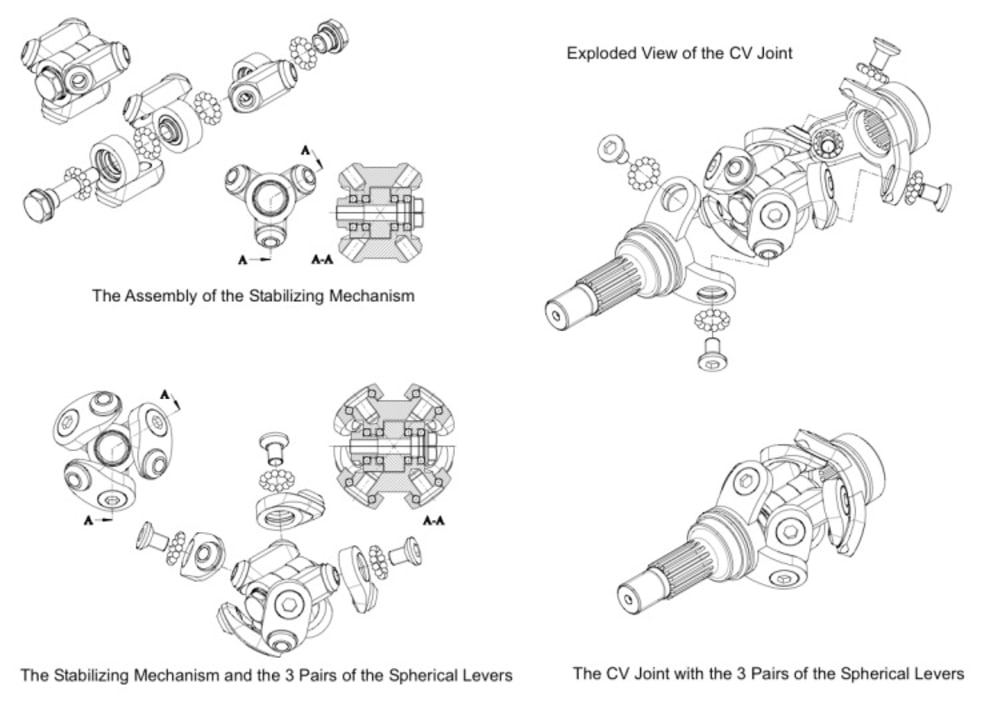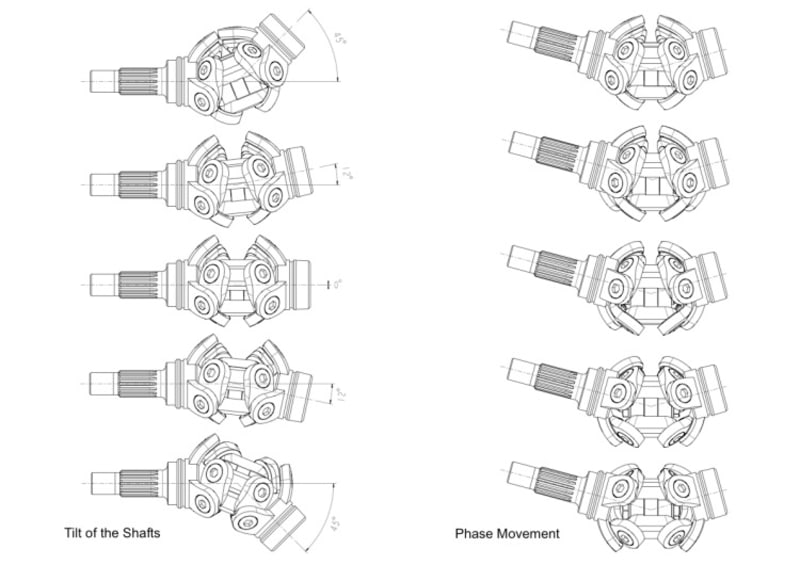The invention relates to constant velocity joint of so-called fixed type, where the input and output shaft cannot move in the direction of their axes.
The aim of the invention is to provide a technical solution which is easier, cheaper, less demanding in production, and provides better parameters than current conventional solutions.
Today the most commonly used type of CVJ is the Rzeppa type joint based on inventions from the 20s and 30s of the previous century. Their disadvantage is a demanding production, no tolerance to axial load and small angle of shaft deflection (roughly twelve degrees to one side). The main shortcoming is presence friction sliding and that the joint is not hundred per cent homokinetic.
The new provided solution is based on several pairs of spherically curved levers, which are rotationally fixed to the input and output shaft, and to a simple mechanism located in between the two shafts – to the stabilizing mechanism. The function of the stabilizing mechanism is to fix each end of the spherical lever to the imaginary homokinetic plane so that the movement of one of the spherical lever from the pair on one side of the homokinetic plane is a mirror image of the movement of the second lever from the pair on the other side of the homokinetic plane. More illustrative description of the function of the CVJ is provided in the attached drawings.
The field of application of this new CVJ is very wide – it can be used in the drive axles of passenger cars, trucks, agricultural machinery, wind turbines, propulsive systems in helicopters, ships and outboard marine motors etc.
The commercial potential of this invention is huge. Imagine how many passenger cars are produced worldwide each year. Each passenger car with front-wheel drive needs at least two CVJs of the fixed type! On the internet can be found information about the size of the CVJ market - a rough estimate is worth about U.S. $ 30,000,000,000 (30 Billion) annually. If this new type of CVJ was able to take at least one percent from this market, this would be a U.S. $ 300 million market! With a slight exaggeration, this invention can be described as "Million Dollar Baby."
The design of the new CVJ compared to conventional design is very simple - the main components – the spherical levers - will be mass produced by die forging with minimum working. Also the parts of the stabilization mechanism will be die forged with minimum working. The chosen production technology with minimum requirements for chip working and grinding ensures low production costs, competitive price, and very good profit.
Like this entry?
-
About the Entrant
- Name:Martin Gecik
- Type of entry:individual
- Patent status:pending








